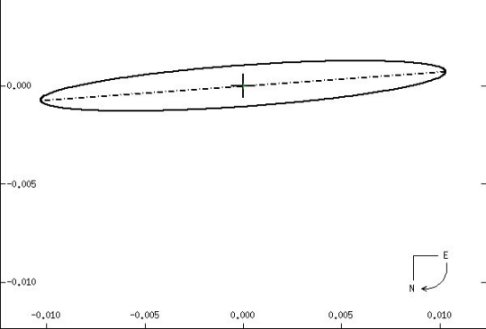
 |
Iota Pegasi B goes about Iota Peg A (at the cross) in a precisely- known path (the two actually orbiting a common center of mass between them) every 10.21 days. The nearly circular orbit looks elliptical because it is so highly tilted, through an angle of 77.6 degrees, to the plane of the sky. The scale is in seconds of arc; note how close the stars are to each other. (From W. I. Hartkopf and B. D. Mason, Sixth Catalog of Orbits of Visual Binary Stars, US Naval Observatory Double Star Catalog, 2006.) |